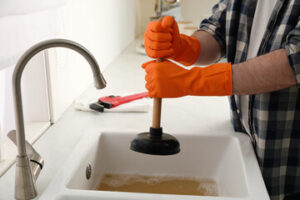Getting professional collision repair after an accident is vital for preserving your vehicle’s value and appearance, as well as its safety and longevity. This article explores some of the most important reasons to get all major collision repairs from an auto body shop with a reputation for excellence.
Leaving hidden damage untreated can lead to serious problems in the long run, from misalignment and suspension to structural integrity. This is why Juanito’s Auto Body shop prioritizes high-quality parts and expert craftsmanship.

High-Quality Parts
A vehicle is more than just a means of transportation; it’s often a source of personal pride and a major investment. For this reason, it’s essential to trust your vehicle to qualified professionals who prioritize transparency and meticulous craftsmanship.
When it comes to repairing your car after an accident, the quality of parts and materials used can make all the difference. Low-quality parts and repairs can have a direct impact on your car’s safety, longevity, and performance.
Professional collision repair services use high-quality, OEM-approved parts to ensure that your car is repaired according to manufacturer specifications. This helps to maintain the structural integrity of your vehicle and restore its original appearance. In addition, using quality parts can help prevent future problems that may occur if the damage is not addressed promptly.
Cosmetic repairs, such as dents and scratches, are also an important part of a comprehensive collision repair service. In addition to restoring the aesthetics of your vehicle, these repairs can also improve its safety by preventing rust and corrosion. Professionals use advanced techniques like paintless dent repair to remove dents without the need for repainting, preserving your original factory finish.
In addition to ensuring the quality of the replacement parts, a professional collision repair shop will always prioritize your safety and resale value by following industry best practices and standards for repairs. For example, a Honda or Acura certified shop will be trained and equipped to calibrate Advanced Driver Assist Systems (ADAS) like forward-radar and lane-change warning systems. This is because these systems are designed and engineered with unique materials that require specialized tools to repair correctly.
By ensuring the quality of repairs, a professional will provide you with an accurate estimate that includes both the cost of repairing the damage and any additional costs that may be required to get your vehicle back on the road safely. This will allow you to weigh the costs of repairing versus replacing your vehicle and make the most informed decision for your situation. This will also prevent hidden damage from escalating into costly issues that could affect your car’s resale value in the future.
Expert Craftsmanship
The body of a vehicle is much more than just an aesthetic feature. It’s also a crucial structural backbone, which must be properly restored in the event of an accident to ensure that safety features like airbags and seatbelts will work as intended. Professional collision repair uses state-of-the-art tools and techniques to ensure that body repairs are made precisely, restoring the integrity of your vehicle’s frame. This can prevent underlying damage from worsening over time and potentially compromising the performance of your car in future accidents.
Even seemingly minor dents and scratches can diminish resale value. Potential buyers may question the structural integrity of a damaged car or feel that the damage indicates a history of poor maintenance. This can lead to costly repairs and reduce the safety and value of your vehicle. Using high-quality materials and expert color matching, professional repair shops can restore your vehicle to its original appearance, instilling confidence in potential buyers.
Major collisions can lead to significant underlying damage that can dramatically reduce your car’s resale value. These hidden issues often include rust, weakened components, and improperly executed repairs. If these problems are not addressed promptly, they can worsen over time, resulting in costly repairs or even vehicle replacement.
Professional shops use specialized inspection tools to identify these issues and address them before beginning any repairs. They’ll carefully examine your car’s exterior, interior, and mechanical components to ensure that all damaged areas are repaired thoroughly and accurately. By ensuring that your vehicle is restored to its pre-accident condition, you’ll be able to maintain its resale value and enjoy a higher return on investment when it comes time to sell or trade.
Skimping on collision repairs might seem convenient in the short term, but it can lead to recurring issues and costly repairs down the road. Quality repairs ensure that your car will be safe to drive and perform at its best for years to come, making it a worthwhile investment for the long term. Forget about DIY fixes and choose a quality shop that prioritizes OEM parts and expert craftsmanship to protect your vehicle’s safety, value, and appearance.
Prevent Hidden Damage
Unlike the superficial damage that you can see after a collision, hidden problems may affect your vehicle’s safety and performance. These issues aren’t obvious and might only be revealed after a thorough inspection of your vehicle by a certified repair professional. These include things like misaligned frames, compromised crumple zones, and improper sensor mounts. These can compromise the structural integrity of your car and put you at greater risk in future accidents. Proper repairs prevent these problems and return your car to its original condition.
A major collision is not just a big inconvenience, but it also diminishes your vehicle’s value. This is because potential buyers will likely be concerned about a history of major damage or the presence of hidden issues. With professional major collision repair, you can avoid these concerns and ensure that your vehicle’s resale value is preserved.
It’s important to choose a certified repair shop with expert technicians who follow factory-recommended techniques and have access to OEM parts. This ensures that your repaired components fit and function properly, preserving the integrity of your car’s chassis. It also allows you to maintain your vehicle’s warranty, if it still has one, as many manufacturers require the use of OEM parts in their repairs.
Aside from ensuring the quality of your repairs, choosing a certified repair shop is also important to preserve your vehicle’s appearance. Skilled technicians can restore your car’s appearance, blending in any new paintwork with the rest of the bodywork. This helps keep your vehicle looking new and appealing, preserving its value and maintaining its curb appeal.
Your car is a big investment and it’s worth protecting, whether you’re in a minor fender bender or a serious collision. Skilled collision repair shops can help you save money in the long run by preventing hidden damage, ensuring high-quality repairs, and avoiding future issues that could detract from your car’s resale value or your safety on the road. In addition, a professional repair will reduce the risk of legal issues down the road, as your repaired car is restored to its road-ready state.
Expert Paint Matching
Whether you’re planning to sell or trade in your vehicle, or just want to preserve its value over time, high-quality collision repair is essential. A car accident can significantly reduce its resale value, and if the repairs aren’t done properly, it can also be dangerous to drive. Professional body shops use quality parts, expert craftsmanship, and rigorous inspection tests to restore vehicles to their original condition.
Attempting to save money by doing your repairs or using a low-quality repair shop can lead to more expensive problems in the future. In addition, a poorly executed repair job can damage your vehicle’s frame or other critical components. This can affect the performance and safety of your vehicle and may result in costly replacements. In contrast, professional collision repair uses top-of-the-line parts and tools to ensure a precise and accurate repair, making it safe and reliable for your next ride.
Proper repairs can also prevent the recurrence of accidents and other issues. Professional collision repair can return your vehicle to its pre-accident condition, preventing future structural damage and increasing its longevity. In addition, the right repairs can help you avoid safety hazards and maintain insurance coverage.
Paint matching is a crucial part of collision repair, and technicians use innovative technology to achieve flawless results. A spectrophotometer, for example, measures light and color to create the most accurate match possible. This helps the technician finish the work quickly and return your car looking better than ever.
In addition to matching the paint color, technicians take multiple steps to prepare the surface for painting. They carefully clean the area to remove dirt, grime, and existing coatings. They then prime the area to create a smooth, even base for the new paint. Afterward, the technician carefully blends the new paint into the adjacent surfaces. This process can be difficult for those who don’t have the right equipment, but a skilled technician can match any type of paint, including pearlescent and metallic finishes.
While many people believe that a collision will lower a vehicle’s resale value, this isn’t necessarily true. High-quality repairs can bring your vehicle back to its pre-accident appearance and increase its value when you’re ready to sell.
